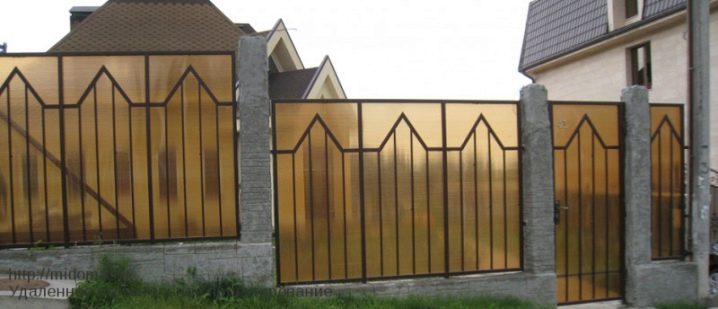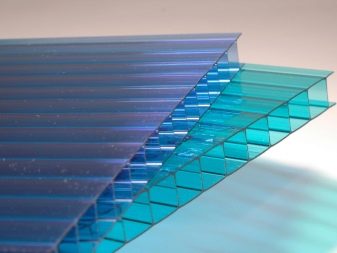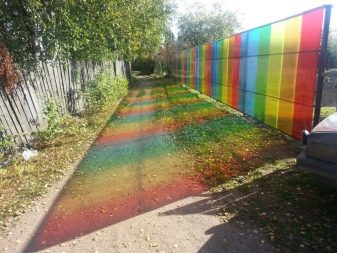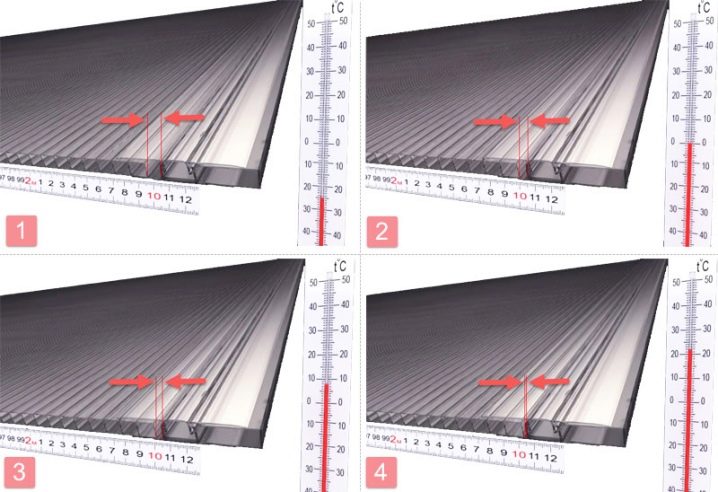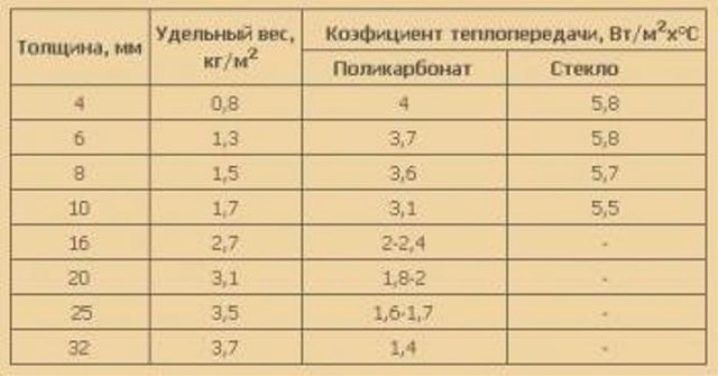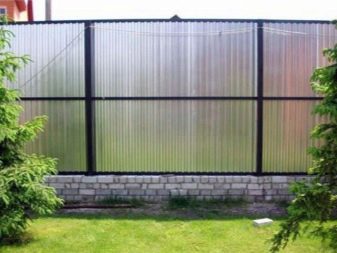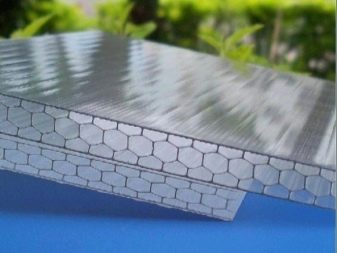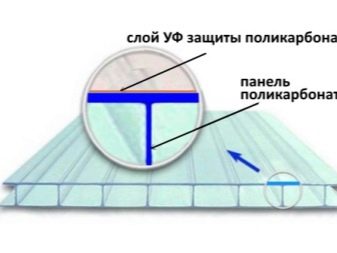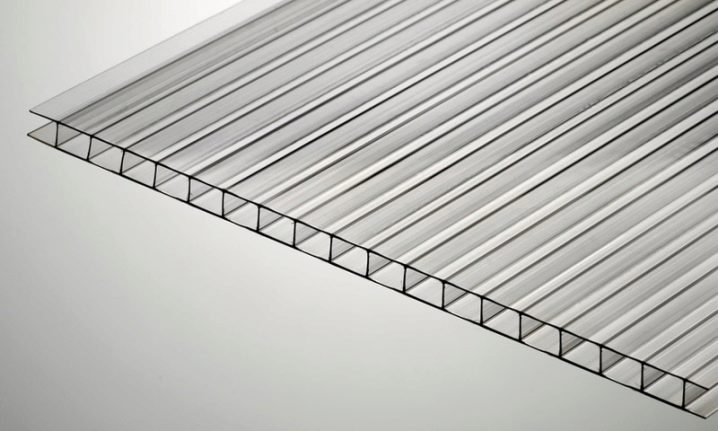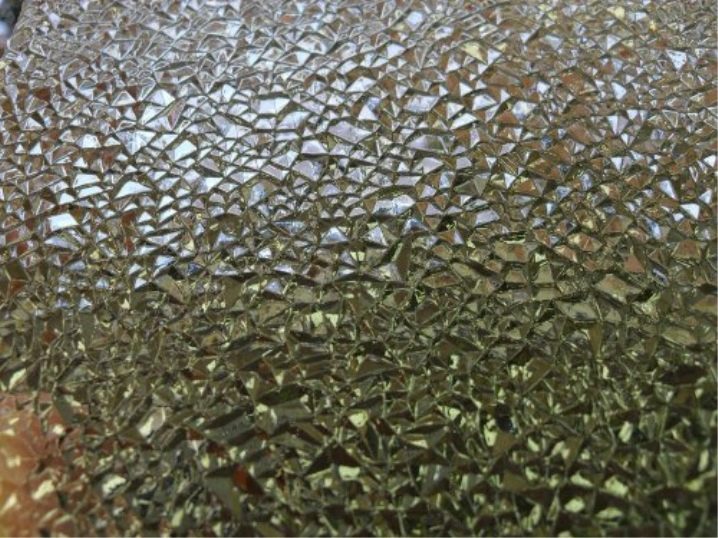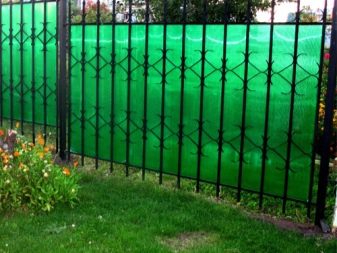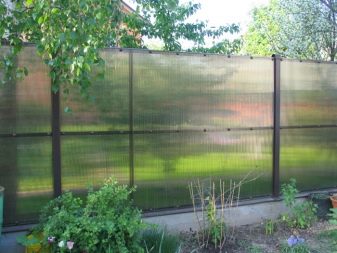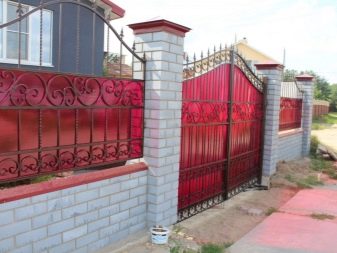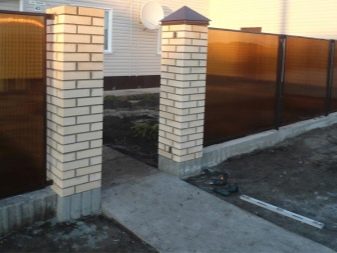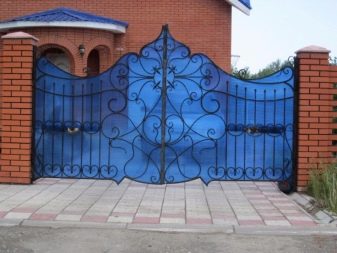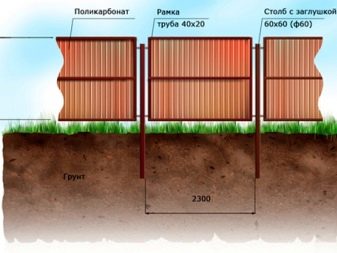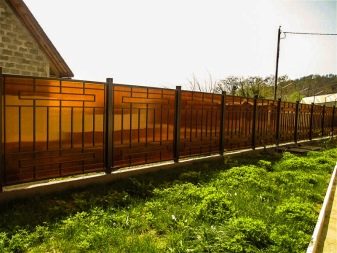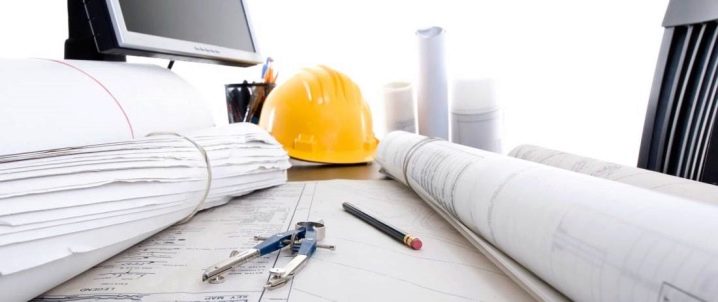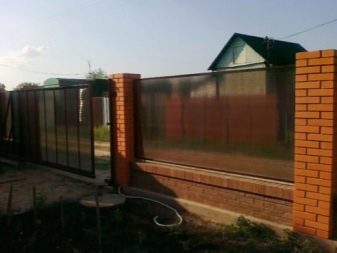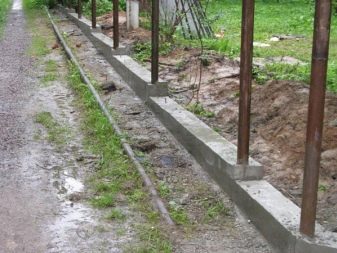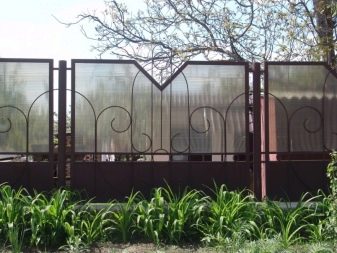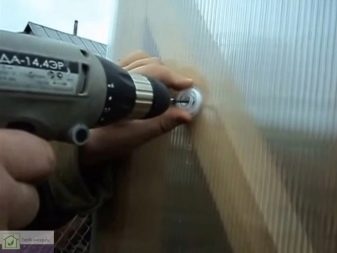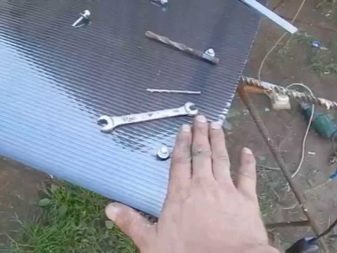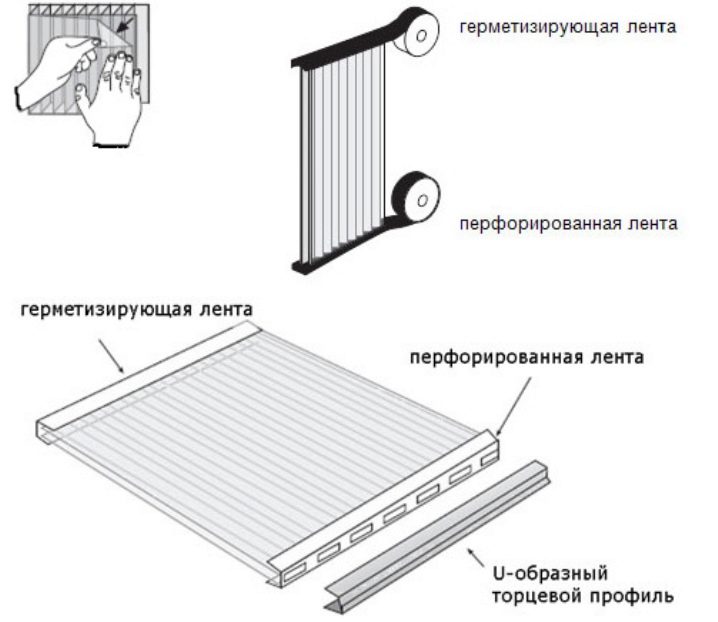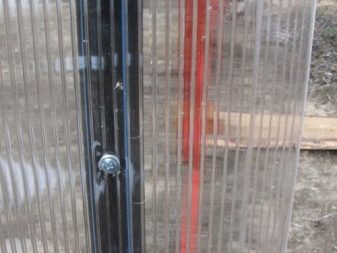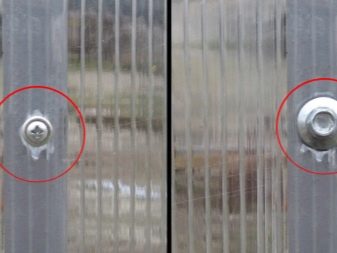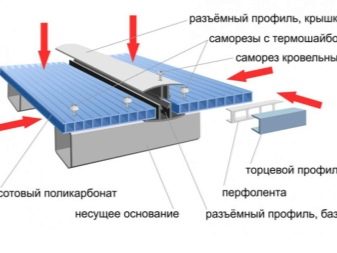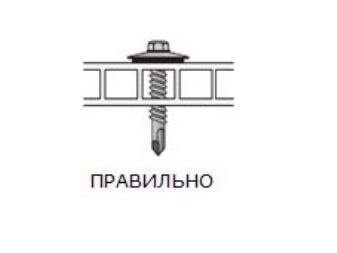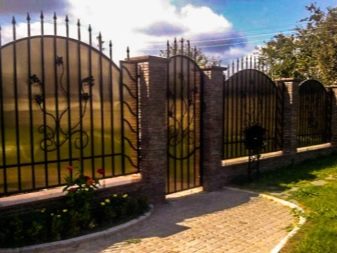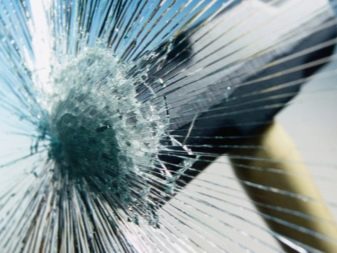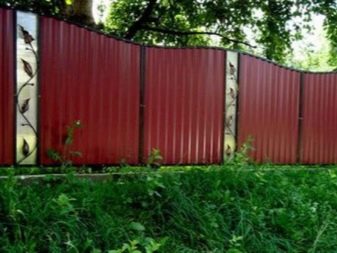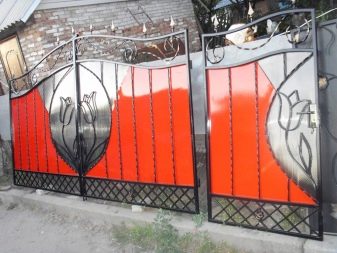Polycarbonate fence construction technology
Fences could always hide and protect the dwelling, but, as it turned out, the blank walls gradually disappear. A new trend for those who have nothing to hide is a translucent polycarbonate sheet fence. It looks quite unusual, and in combination with art forging - effectively and impressively. Before you demolish a good stone fence, you need to figure out what carbonates are and what are the features of working with them.
Special features
Polycarbonate is a transparent, thermostable substance belonging to the group of thermoplastics. Due to its physical and mechanical properties, it has become widespread in various areas of production. Most methods of polymer processing are applicable to it: blow molding or pressure casting, the creation of chemical fibers.The extrusion method is the most popular, which allows you to give a granular substance a sheet form.
In this form, polycarbonate quickly won the construction market, as a universal material that can even replace the classic glass.
Such high marks are explained by the following characteristics:
- It withstands significant mechanical loads, is durable, and maintains the shape specified during processing. At the same time, prolonged abrasive impact adversely affects the appearance of the material, leaving unaesthetic scratches;
- Resistant to temperature changes. On average, the temperature range of most brands - from -40 to +130 degrees. There are samples that retain their properties at extreme temperatures (from -100 to +150 degrees). This property allows you to successfully use the material for the design of outdoor objects. At installation it is necessary to take into account that with a change in temperature the linear dimensions of the sheets also change. The best is considered thermal expansion, not exceeding 3 mm per meter;
- It has chemical resistance to acids of low concentration and solutions of their salts, to the majority of alcohols.Ammonia, alkali, methyl and diethyl alcohols are best kept away. Also not recommended contact with concrete and cement mixtures;
- A wide selection of panels in thickness. Most often, in the markets of the CIS countries, indicators from 0.2 to 1.6 cm can be found, in EU countries, the thickness reaches 3.2 cm. The specific weight and heat and sound insulation will depend on the thickness of the material;
- The heat insulating properties of polycarbonate are not decisive, however, in terms of heat transfer, it is more efficient than glass;
- High sound insulation performance;
- Ecologically safe due to its chemical inertness. It is non-toxic even under the influence of high temperatures, which allows it to be used without restrictions in residential premises;
- It has a fire safety class B1. It is hardly flammable - ignition is possible only at direct influence of fire and at excess of a certain temperature border. With the disappearance of the source of fire burning stops;
- Long service life (up to 10 years) is guaranteed by the manufacturer, provided proper installation and operation;
- Optical characteristics. Light transmittance depends on the type of polycarbonate:solid is capable of transmitting up to 95% of light, in a cellular material, this figure is lower, but it diffuses light perfectly;
- Permeability is minimal.
Judging by the properties, polycarbonate is really wonderful material, but not everything is so simple. In its pure form, it under the action of ultraviolet loses its optical (transparency) and mechanical (strength) qualities. This problem is solved with the help of UV stabilizers, which are applied to the sheets by coextrusion. The base and protective layer are firmly fused to prevent delamination. Usually, the stabilizer is applied only on one side, but there are brands with two-sided protection. The latter will be the best option for protective structures.
Kinds
On the internal structure of the sheets there are two types: honeycomb and monolithic. You can conditionally select the third group of textured polycarbonates.
- Honeycomb or cellular panels They consist of numerous chambers formed by internal stiffeners. If we consider the sheet in cross section, it becomes obvious similarity with the honeycomb in 3D. Air-filled sections enhance the insulating properties of the material and strength characteristics. They are available in several versions:
- 2H have cells in the form of a rectangle, are found in samples up to 10 mm thick.
- 3X they are distinguished by a three-layer structure with rectangular and inclined partitions.
- 3H - three-layer with rectangular cells.
- 5W - five-layer sheets with a thickness of 16 to 20 mm with rectangular sections.
- 5X - five-layer sheets with straight and inclined stiffening ribs.
- Monolithic panels in cross section have a continuous structure. In appearance are very close with silicate glass. It is a monolithic polycarbonate that is often used in the creation of modern glass packs.
- Textured panels have a textured surface obtained by embossing. This most decorative type of polycarbonate sheets is characterized by high light transmission and scattering characteristics.
Decor
Another quality for which polycarbonate is valued is a wide choice of colors for both cellular and monolithic sheets. Coloring is done at the initial stages of the production of panels, so the color saturation does not decrease with time. On sale you can find transparent, opaque and translucent materials of all colors of the rainbow.The variety of colors, coupled with the physical and mechanical properties of the material make it very popular in the design environment.
Constructions
In the construction of protective structures most often use panels of cellular type with a thickness of at least 10 mm. There are various constructions: modular and solid, on a wooden, stone or metal frame, but the combined fences look most organically. In them, polycarbonate acts as a decorating element, ensuring noise insulation, flexibility, heat resistance and a wide variety of colors. At the same time, the reliability of the fence does not suffer: the polymer is able to withstand considerable loads, but it is not comparable with metal or stone.
Despite the variety of options the most common fence on a metal frame. Such popularity is due to ease of installation and budget. The whole structure consists of support pillars, to which transverse lags are attached. The finished frame from the inner side sheathed with polycarbonate panels. The strength of such a structure is controversial: the metal batten is usually made with a large pitch, and the panels are easily damaged by a direct blow.This option is perfect as a decorative fence, for example, as the border between neighbors.
Installation
The sequence of installation of polycarbonate fence is not much different from the installation of fences from other materials. It should consider in detail the stages of construction of the simplest design.
The preparatory stage includes:
- Ground study. The type of foundation depends on its stability: columnar, tape or combined.
- Design. They determine the size and design of the future structure, draw a drawing in which they mark the distance between the supports (no more than 3 m), the number of lags and the place of additional elements (gates, wickets).
- Selection of materials and tools. For support pillars choose the profile pipes 60x60 mm, for the sheathing - pipes 20x40 mm.
When everything is ready, you can start marking the territory. It is convenient to use a rope and pegs for this. The latter are driven into the place of installation of supports. Then comes the turn of the foundation. Column base is chosen for the construction of lightweight materials. It is the easiest to prepare. For this, wells are drilled, 20 cm deeper than the level of soil freezing (1.1-1.5 m for the middle zone).Bearing pipes are strictly vertically inserted into holes, and they are poured with concrete.
For areas with difficult terrain or unstable soil will have to resort to a strip foundation. According to the markup, they are digging a trench with a depth of half a meter, at the bottom of which a drainage layer of sand and rubble is installed. If you plan to raise the foundation above ground level, then additionally install wooden formwork. Then, supports and fittings are mounted on the drainage cushion, and the whole structure is poured with concrete. Setting time is about a week.
Installation of the frame is to install horizontal lags in several rows (depending on height). Two options are possible here: tightening elements with conventional bolts or welding. After that, a cap is installed on the top of the pillars to prevent the ingress of water and debris, and the entire frame is primed and painted. Before painting, it is advisable to drill holes in the attachment points of the polymer. The most responsible - fixing polycarbonate.
Successful completion of work guarantees the following of several rules:
- the trim should be started after all frame manipulations;
- The optimum temperature for installing polymer is from 10 to 25 degrees. Earlier it was mentioned about the properties of the material to narrow and expand depending on temperature. In the range of 10-25 degrees, the leaf is in its normal state;
- the protective film is kept until the end of the work;
- Polycarbonate sheets are arranged in such a way that the stiffeners are strictly vertical. This will ensure unobstructed removal of condensate and moisture;
- cutting sheets up to 10 mm is carried out with a sharp knife or a small-toothed saw. Thicker panels are cut using a jigsaw, circular saws. It is important to cut in such a way that when installed between the polymer web and other elements, gaps of a few millimeters remain for expansion;
- in order to protect against debris and moisture, the ends of the cut sheets are glued with a sealing tape on the upper side, and at the bottom - perforated (to allow condensate to exit). Polycarbonate end profiles are installed on top of the tape. Drain holes are drilled along the lower profile at a distance of 30 cm;
- Polycarbonate sheets are fixed on the crate with self-tapping screws; therefore, they are pre-drilled holes in the places of future fastening with a step of 30-40 cm.They should be located at the same level and correspond to the holes made earlier on the logs. The minimum indent from the edges of the panel is 4 cm. For cellular material, it is important that the drilling is done between the stiffeners. To compensate for expansion, the size of the holes should be 2-3 mm greater than the diameter of the screw;
- fastening is carried out with screws with rubber washers. It is important to avoid excessive tightening, as this will cause the sheet to deform. Bolts twisted at an angle will also damage the material;
- if it is planned to fence a solid construction, then separate sheets of polymer are joined using a special profile;
- when all work is completed, you can remove the protective film.
Reviews
The opinion of the people regarding the polycarbonate fence is ambiguous. The main plus, in the opinion of members of the forum, is the weightlessness and aesthetics of the fence. At the same time, users questioned the reliability and durability of such structures. For a more durable construction, they advise choosing sheets with a large thickness and with two-sided UV protection. However, the cost of such panels exceeds the price of poflists.
The slightest error in installation reduces the life of the material to a couple of years. Such an unusual material attracts the attention of vandals: everyone wants to test it for durability. Cellular panels with plugs at the ends are misting inside, and without plugs, although ventilated, they collect dirt and debris. Many do not consider the transparency of the material a plus. Most agree that this expensive material is suitable only for decorative fences or as a finish on the main fence.
Successful examples and options
Among the successful projects of polycarbonate, you can include a fence made of forged gratings sheathed with polycarbonate sheets. This stylish solution for a private house combines the strength of a metal and the illusion of fragile glass. The combination of forging, brick or natural stone and a honeycomb or textured polymer looks good. Even the industrial look of corrugated plastic inserts enliven the polycarbonate.
For how to choose cellular polycarbonate, see the following video.

